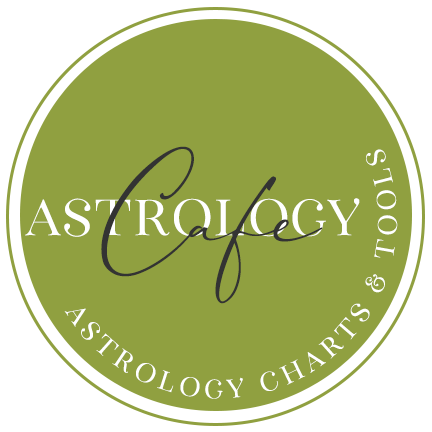Synastry in More Detail
techniques for determining compatibility:
Synastry & Relationship Astrology
On our main Synastry page, we offered an overview of considerations for compatibility. On our Compatibility Analysis page, we offered a weighting system for various interchart aspects and positions. On our House Overlays page, we explore the significance of planets and points falling in a partner’s houses. On our Synastry Books Compared page, we reveal our favorite books on relationship astrology, and why we like them.
On this page, we explore Synastry in more detail.
Karmic Connections
Connections that seem fated and karmic often include one or more of the following interplays between the charts: Conjunctions to the Vertex (especially personal planets or the Ascendant or Descendant), IC (cusp of the 4th house), South Node, and the progressed Vertex or Descendant.
Attraction
We have an article entitled Astrological Indicators of Sexual Attraction, in which we explore some indicators of a basic physical attraction between individuals. Attraction does not guarantee longevity, of course. It generally does precede a significant relationship, and in some cases, is important simply for what it is, as we may not have a current interest in establishing binding ties.
Romantic attraction is often indicated when the Ascendant of one person conjuncts or opposes another person’s Sun, Moon, Venus, or Mars. Most potent when it comes to attraction are interplays between personal planets that are yin and yang (feminine and masculine), as these can arouse much intrigue. If we consider the Ascendant as a yang energy, and exclude the neutral (unisex) personal planet Mercury, then we have the following interplays:
Sun-Moon
Sun-Venus
Moon-Mars
Moon-Ascendant
Venus-Mars
Venus-Ascendant
Yang-yang and yin-yin interplays between personal planets and Ascendants certainly play a role in attraction as well. However, the yin-yang interplays tend to be more intriguing and “romantic”. Of the planetary pairs in the list above, Sun-Venus seems to be the least sexual and romantic (it generally inspires a strong affection).
Parallels and Contra-Parallels in Declination
You might want to consider determining parallels and contra-parallels between planets in synastry. I generally do consider them, although I don’t always use them if I am doing a quick analysis. If you want to know how to determine parallels and contra-parallels in declination, click here.
Parallels are likened to conjunctions, and contra-parallels to oppositions. When planets form an aspect to one another in synastry and are also parallel to each other, the parallel acts to reinforce that aspect.
I read parallels in synastry as easy, natural, and spontaneous connections between the two energies represented by the planets involved. The interplay is easier than the conjunction, and the affinity is spontaneous.
I have also found that Saturn parallels to personal planets are a little easier than the conjunctions in synastry. The Saturn person is not as inclined to criticism or control as is often the case when it is an interaspect in synastry. The stabilizing influence of Saturn is more prominent.
Further, when the planets involved are yin and yang (such as Sun with Moon, Moon with Mars, Venus with Mars, etc.), we have some wonderful connections.
Solstice Points/Antiscia in Synastry
Some astrologers use Solstice Points (Antiscia) in Synastry work, where the Antiscion degrees of one person’s planets and points are compared to the other person’s natal positions. To calculate Solstice Points, click here.
Reference to Solstice Points in synastry can be found in Relationship Analysis (affiliate link) (1) and Love Formulas-2 (affiliate link) (2). Look for close conjunctions and oppositions from the planets in one person’s natal chart to the other person’s Antiscion points.
In my records, I have some examples:
- the woman’s solstice Venus exactly conjunct the man’s Descendant in the synastry of a couple who both felt they fell in love at first sight (no other Ascendant-Descendant connections in regular synastry);
- a man whose Venus-Moon conjunction did nothing but square his partner’s Saturn—the anticision degrees of Venus-Moon tightly conjunct her Sun/Moon midpoint;
- in two cases of married couples with no Sun-Moon interaspects nor Sun/Moon midpoint contacts, solstice Venus and solstice Mars, respectively made tight conjunctions to Sun/Moon midpoints;
- tight solstice Vertex conjunction to the Moon;
- exact solstice North Node conjunct Venus in synastry;
- a man’s solstice Sun tightly conjunct a woman’s Moon in a relationship in which proposal of marriage occurred within the first two weeks of meeting (they did marry).
Midpoints in Synastry
Looking to the synastry between each person’s midpoints can be very revealing. It is also very time-consuming! Unless I am going over a relationship with a fine-toothed comb, I do not examine all of the interchart aspects involving midpoints. However, one of the first things I do is calculate and add the Sun/Moon midpoint (![]() ) to any chart. It is a highly sensitive and personal point that I simply never ignore in any relationship analysis.
) to any chart. It is a highly sensitive and personal point that I simply never ignore in any relationship analysis.
With midpoint work, it is customary to consider the following aspects: conjunction, opposition, square, semi-square, and sesquiquadrature. When a planet makes any of these aspects to a midpoint, the notation looks like the following (where, for example, Venus is the planet forming one of these aspects with the Sun/Moon midpoint):
Venus=Sun/Moon
or: ![]() =
=![]()
In synastry, the Sun/Moon midpoint is very often activated by the other person’s personal planet in significant relationships.
The Sun/Moon midpoint represents a point of “inner marriage” and symbolizes close personal relationship.
If another person’s personal planet, and especially the Sun or Moon, forms an aspect such as the ones referred to above, that person represents some kind of promise of integration to the Sun/Moon midpoint owner. Whether or not integration actually happens, this synastry connection offers a promise which can be difficult to resist. Therefore, it is a strong indicator of attraction.
The Sun/Moon midpoint is often activated by transit and by progression when a person forms a significant relationship, and is often seriously challenged when there are disruptions in significant relationships, such as divorce itself. In my own life, when I met and married a man as a young adult, the following activations were present:
Progressed Mercury=Natal Sun/Moon
Transiting Pluto=Natal Sun/Moon
Transiting Uranus=Natal Sun/Moon
Transiting Saturn=Natal Sun/Moon
The more aspects, the more likely a significant event will occur. When the first overt signs of challenges to my marriage occurred, Progressed Mars=Natal Sun/Moon. When I separated, Uranus progressed to an exact square to my natal Sun/Moon. At the time of my legal divorce, no directions or transits to my Sun/Moon were present. This does not surprise me because, to me, the official divorce was simply a legality. The disruptions that meant something to me on a personal level were represented in the transits and directions to my Sun/Moon midpoint.
The Sun/Moon midpoint is a highly sensitive point in synastry. Inherent in its symbolism is the desire for companionship. Another midpoint that you might want to consider in relationship analysis is Venus/Mars, which Reinhold Ebertin in his most influential book, The Combination of Stellar Influences (affiliate link), referred to as “the impulse to love” and “passion”.
I do not believe that if somebody’s personal planet = my Venus/Mars that this would be suggestive of a powerful connection between us in general. In relationship, it may just as well signify a short-term affair or an impulsive attraction. Other strengthening factors in synastry should be present in order for this connection to mean more, of course. However, it can be interesting to construct astrological “statements” (such as her Venus/Mars= his Sun) in order to arrive at more details in a relationship analysis.
Of course, it should also be revealing if we take a look at the midpoint statements made in the individual charts. If, natally, a person has Venus/Mars=Saturn, how might that play out in terms of relationship potential and expectations?
What Happened?
Some of us look to astrology to try to understand what happened to a relationship that has been dissolved.
Sometimes, relationships start off with so much promise and “oomph” that they leave individuals wondering “what happened?” when the relationship cools off. Most of the time, the answers are to be found in natal chart synastry. However, there are some answers in progressions as well.
An example from my files is a relationship that started off with tremendous power. Both individuals were immediately taken with each other. After some months, the feelings seemed to be dying, particularly on the man’s part. The synastry between the natives was good, but not spectacular. What may explain the fizzling out that occurred is the man’s progressed Sun/Moon midpoint.
At the time of meeting, his Sun/Moon midpoint was directly opposite (exact) the woman’s natal Moon. This is a powerful connection, as the Sun/Moon midpoint represents close relationship. The Sun/Moon midpoint is the “inner marriage”, and it is a highly sensitive point in synastry.
The progressed Sun/Moon midpoint moves at an approximate rate of 6 or 7 degrees per year, which translates roughly to a little more than one degree every 2 months. Because this couple does not have interchart aspects between the Sun and Moon, nor Sun/Moon midpoints, in their natal charts, the progressed to natal contact seems to have been a transient thing. As the man’s progressed Sun/Moon midpoint progressed beyond the woman’s Natal Moon (out of range and no longer in aspect), the connection fizzled as well, considering there weren’t strong, permanent natal connections in the first place.
These types of situations can happen in synastry between other progressed points and natal points, some of which are longer-lasting. For example, if my progressed Mars conjuncts your natal Venus, the effects would last (depending on Mars’ speed at the date that corresponds with my secondary progressions) quite possibly a good 2-3 years if we allow a small orb, and many more years if we accept a larger orb of influence.
We offer a Progressed Synastry report. Although it doesn’t include midpoints, it compares two people’s progressed planets to explore their evolving compatibility.
The Composite Chart
The composite chart is a chart of the relationship itself and the dynamics of the relationship. We explore the composite chart here.
Interchart aspects and comparisons
When interpreting interchart aspects, keep in mind:
- Each person whose planet is involved will likely take on the role of that planet, or play out the energies of that planet, in that particular interaction. For example, if A’s Saturn conjuncts B’s Sun, A will likely take on the role of Saturn in the relationship when B is expressing his or her own Sun qualities. Likewise, B will play out the energies of the Sun when faced with A’s expression of Saturn. You can think of it as a game, in a sense. When B is expressing individuality, A picks up his or her Saturn role.
- The sign and house placements of each planet should be considered. If one person’s Sun conjuncts another person’s Saturn, both in Scorpio, the interplay will be expressed differently than if the conjunction were in Sagittarius.
Aspects between charts.
See Also: Comparing Mercury signs by element
Next: Relationship Potential
We are actively developing the Relationship Astrology portion of our site by adding more articles, techniques, interpretations, and tips. As it stands, we have a good amount of information on the topic. See our main Synastry hub page and scroll down to the bottom for links to all of our Synastry articles.
See also Synastry House Overlays article
References & suggested further reading:
(1) Relationship Analysis by Robert Blaschke (affiliate link).
(2) Love Formulas-2 by Nance McCullough (affiliate link to Amazon).
(3) The Combination of Stellar Influences by Reinhold Ebertin (affiliate link).
We offer various Synastry, Composite, and relationship reports as well as a Progressed Synastry report.











